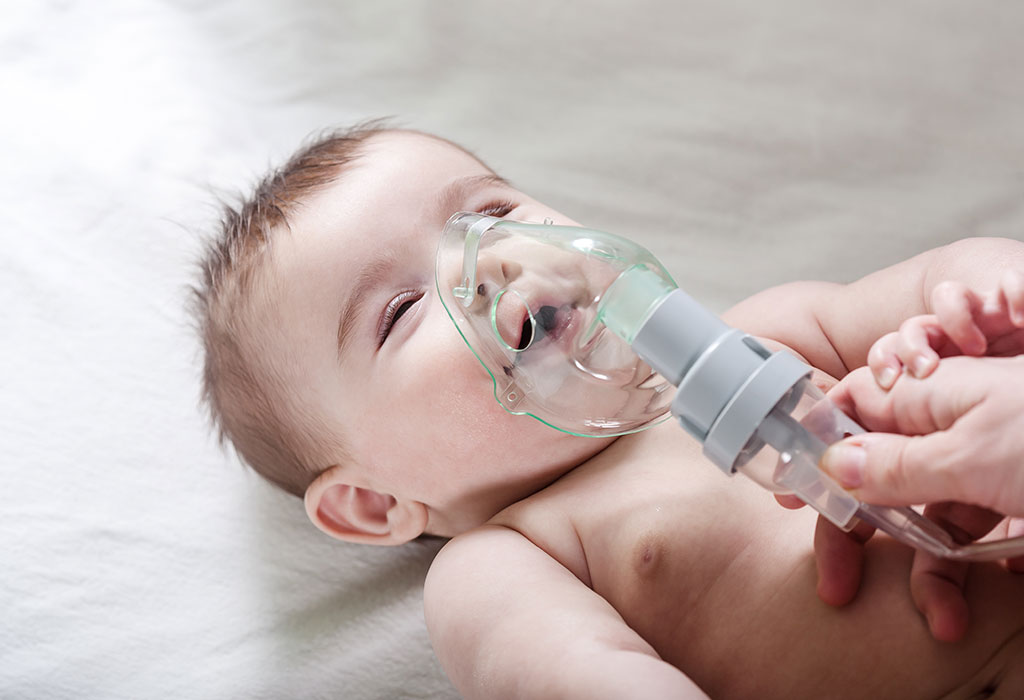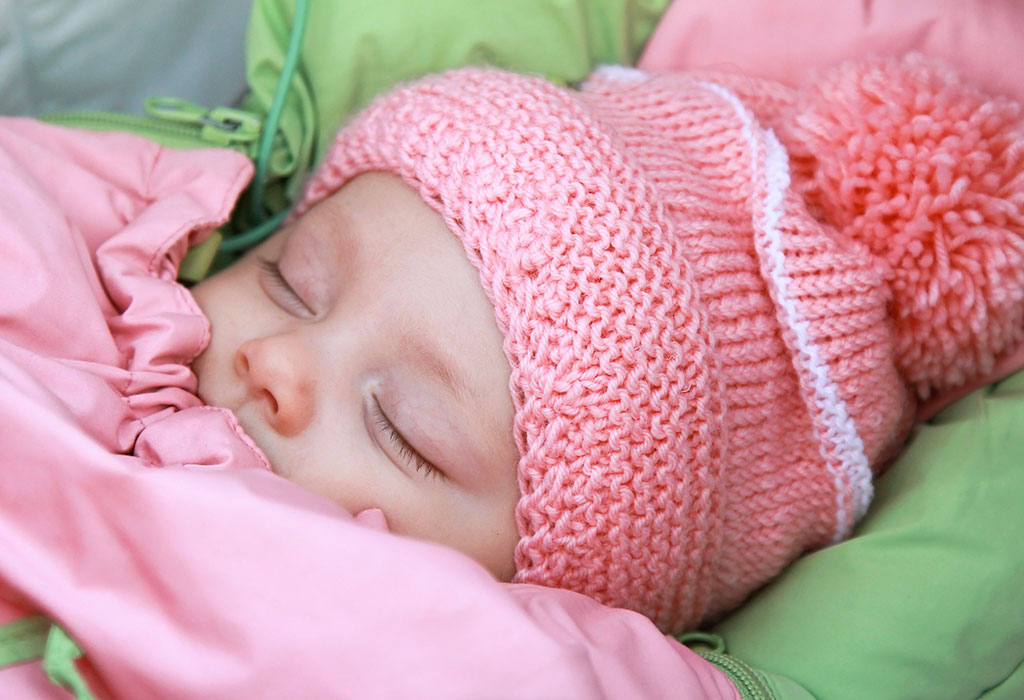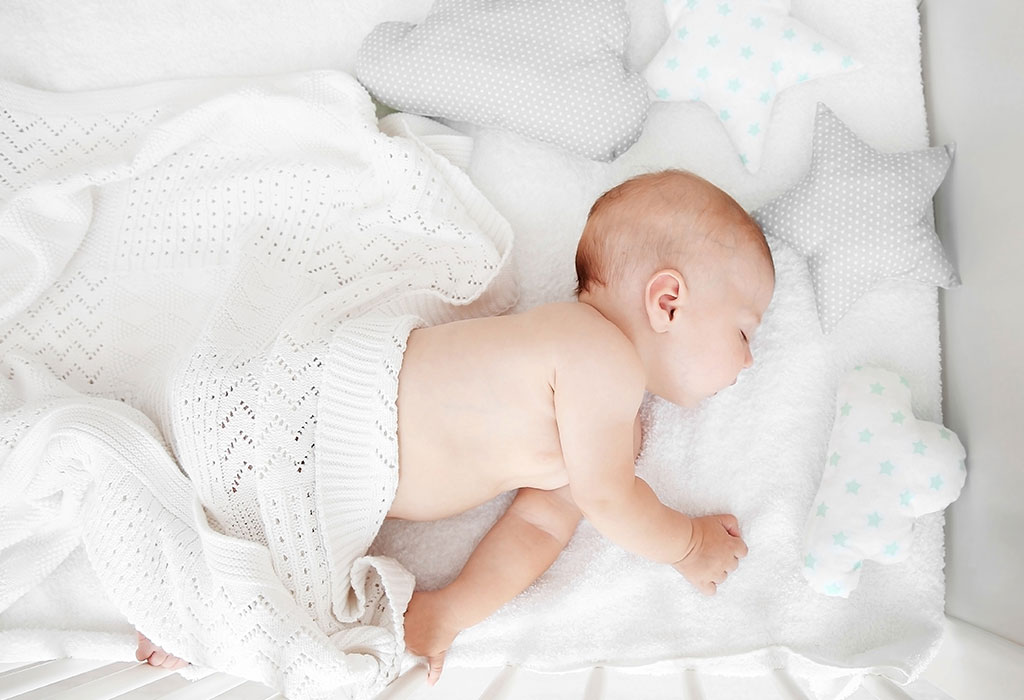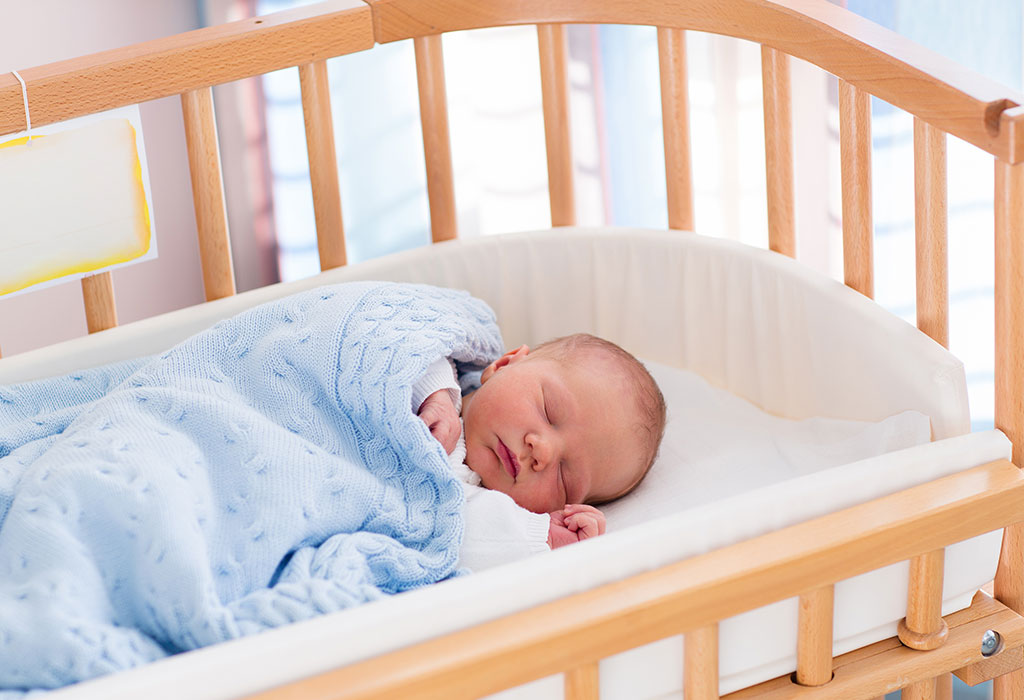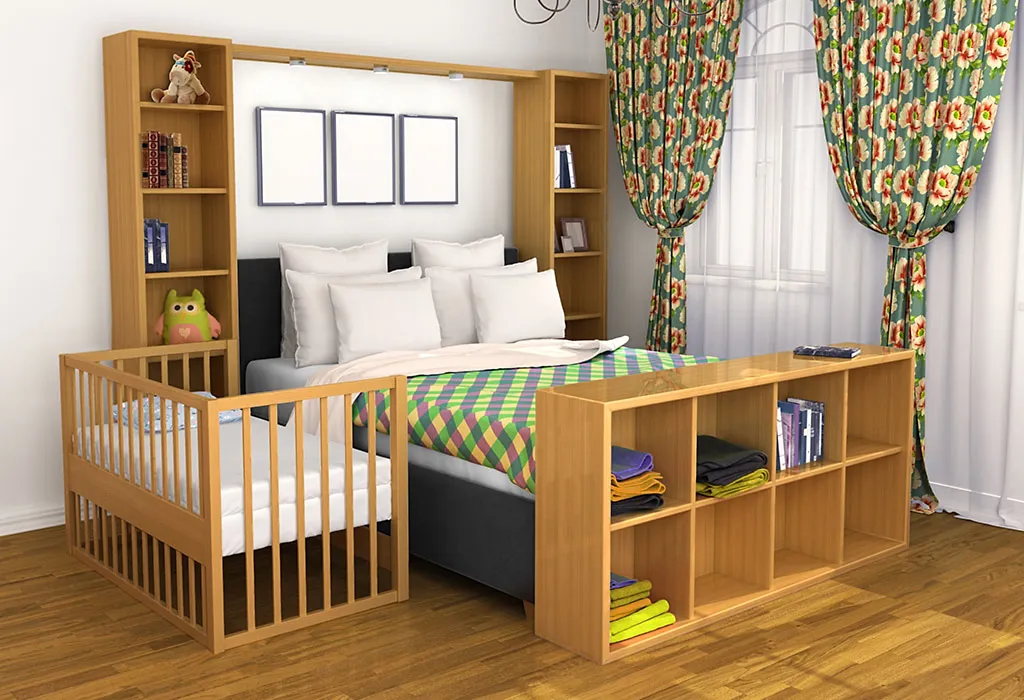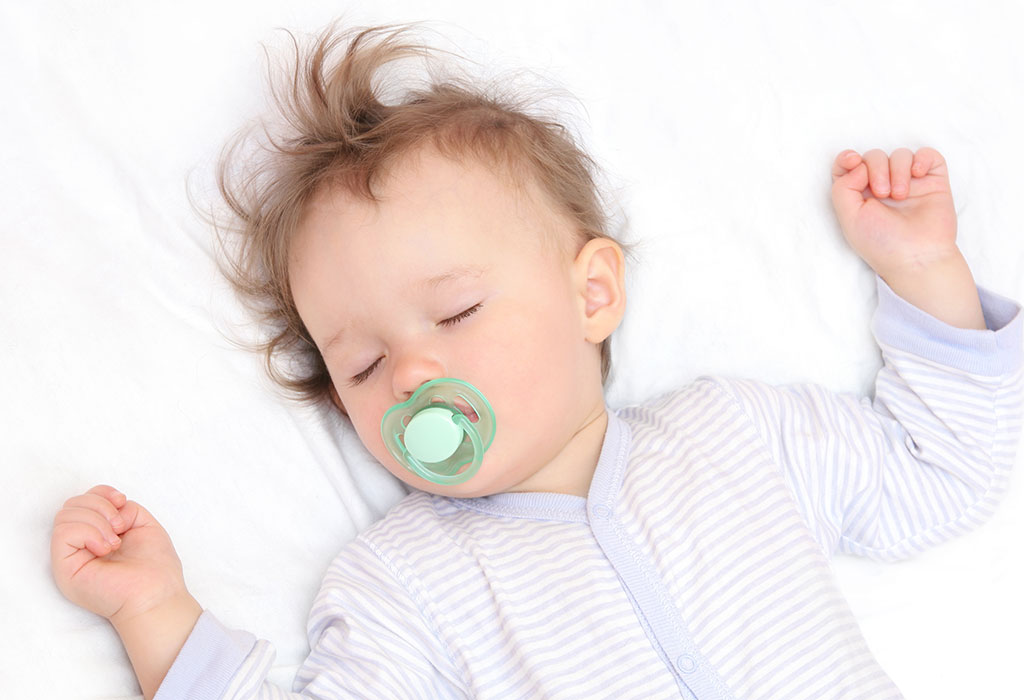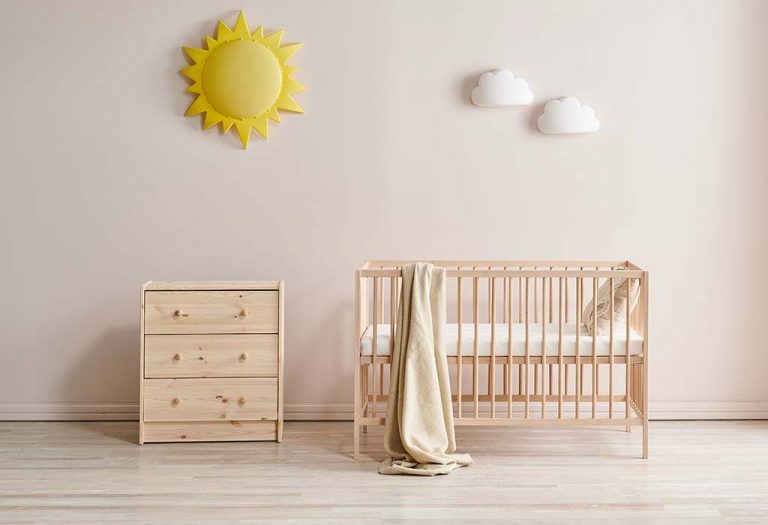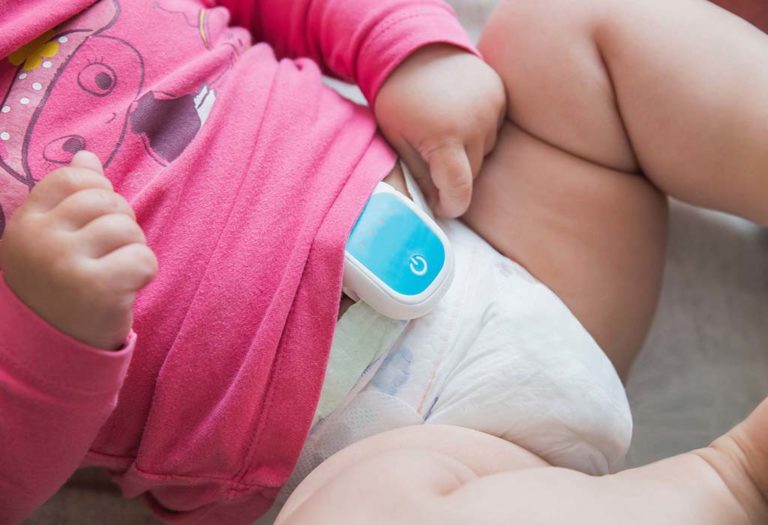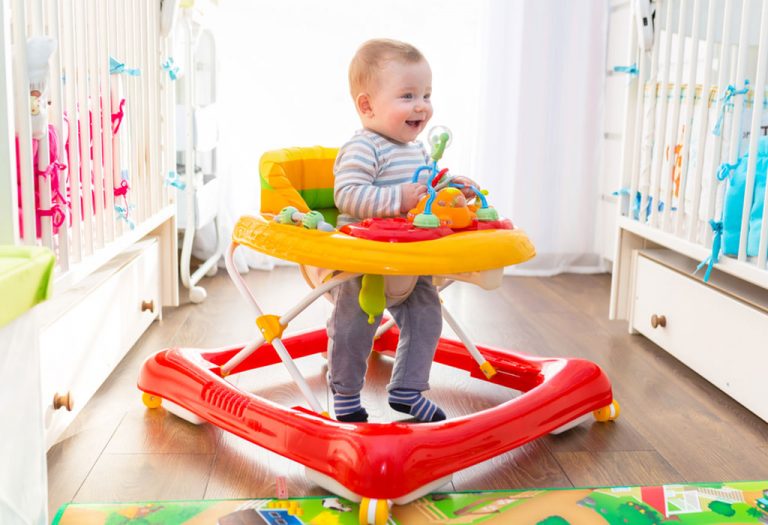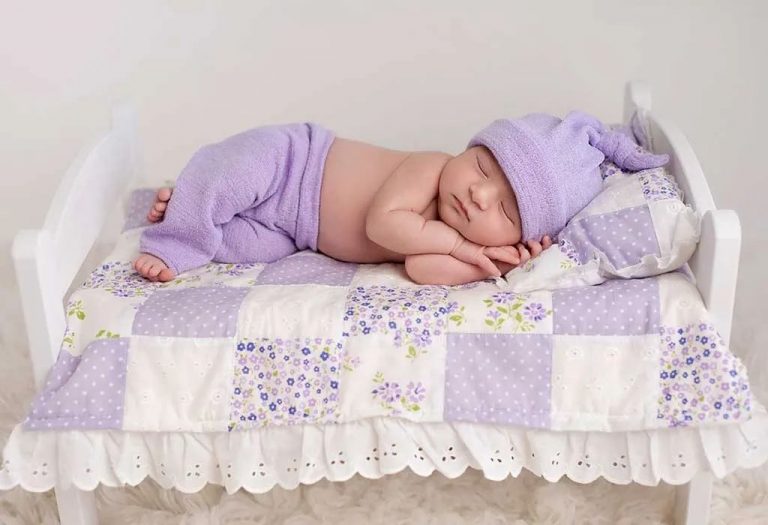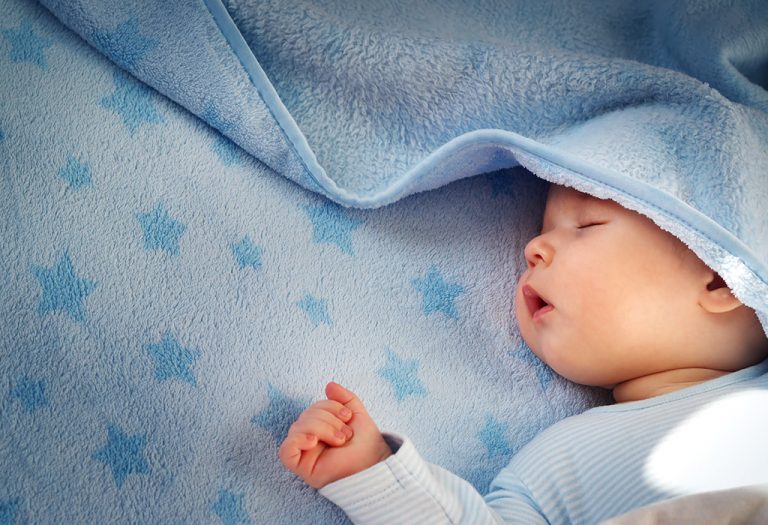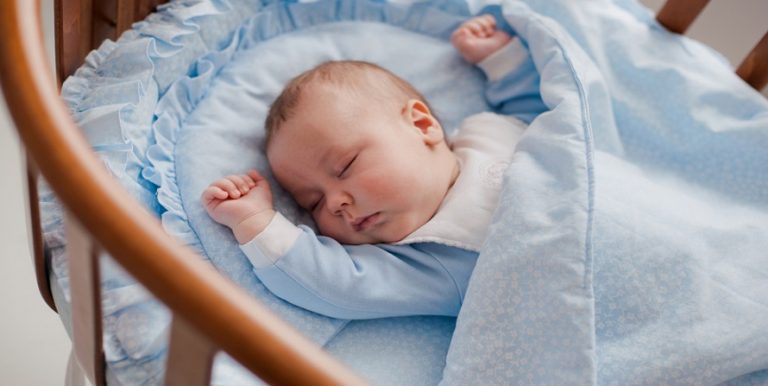Sudden Infant Death Syndrome (SIDS) – Causes, Symptoms and Prevention
Every mother strives to ensure the welfare of her child at any cost, dedicating herself to providing the best care possible. However, taking care of an infant is an incredibly tough and demanding job. Even the most normal, mundane things, such as sleeping or feeding, might pose a grave danger to a sensitive newborn. One such critical safety issue is Sudden Infant Death Syndrome (SIDS), a condition that remains a significant concern for parents worldwide. Read on to discover essential facts about SIDS that may help avoid the known causes and, ultimately, protect your baby from this tragic occurrence.
What Is SIDS?
Here’s the SIDS meaning. Sudden Infant Death Syndrome, as the name indicates, is the sudden, unanticipated death of an infant during sleep. SIDS in babies can occur in a normal, healthy baby due to unexplained reasons (1). One of the possibilities associated with SIDS is the sudden defect in any portion of the brain that might lead to breathing difficulty. There are external factors that can cause SIDS as well. This makes it necessary to double-check the safety of infants while they are asleep.
How Common Is SIDS?
Sudden Infant Death Syndrome (SIDS) is a rare but devastating occurrence, and understanding its prevalence can help parents and caregivers stay informed. SIDS is the leading cause of death among infants between one month and one year of age, though the overall incidence has declined significantly in recent decades due to increased awareness and preventive measures. In the United States, for example, SIDS affects approximately 38.4 deaths per 100,000 live births, accounting for around 1,300 infant deaths annually (2). Globally, rates vary by region, with some countries reporting lower numbers due to stricter adherence to safe sleep practices.
Causes of SIDS in Babies
A definite cause for SIDS continues to be a mystery. However, we have seen a significant drop in the cases where a baby dies from SIDS. This is because of awareness of the condition and the incorporation of sleep safety in infants. Here are the Sudden Infant Death Syndrome causes (3).
Physical Factors
SIDS can often be linked to underlying physical factors that affect a baby’s ability to regulate vital functions. These factors may include health conditions that increase vulnerability during sleep.
- Brain defects: Underdeveloped brain regions in premature, low-birth-weight babies or those that are born as a part of multiple births (i.e. in twins, triplets, etc.) can impair breathing regulation and arousal responses during sleep, increasing SIDS risk.
- Abnormal Reflex Responses: A weakened laryngeal reflex may fail to clear fluids from the airway, potentially leading to sleep apnea or SIDS.
- Respiratory illness and infections: Some cases of cold and respiratory tract infection can lead to trouble breathing. These issues increase when the baby is asleep.
- Genetic Predisposition: Some babies may inherit genetic mutations that affect heart or brain function, making them more susceptible to SIDS.
Sleep Factors
The sleep environment and habits play a critical role in SIDS risk. Ensuring a safe sleep setup and avoiding common mistakes can significantly reduce the likelihood of SIDS.
- Excess Heat: Overheating due to excessive clothing or high room temperatures can disrupt a baby’s breathing regulation, increasing the risk of SIDS by elevating metabolism and impairing respiratory control.
- Wrong Sleeping Position: Placing a baby on their stomach or side can obstruct breathing or cause the face to press against the mattress, raising SIDS risk; always lay babies on their back to ensure safer sleep.
- Soft Bedding or Mattresses: Pillows, blankets, or soft mattresses can pose suffocation hazards, especially if the baby rolls over or buries their face.
- Secondhand Smoke Exposure: Babies exposed to smoke are at higher risk of respiratory issues, which can contribute to SIDS during sleep.
To summarise, allowing the baby enough room to avoid a rise in temperatures, dressing aptly for the weather, and putting the baby to sleep on his back can help reduce the risks of SIDS greatly. Wondering when does the SIDS risk end? SIDS risk significantly decreases after the first year, with most cases occurring before a baby turns one, which is when SIDS risk typically ends.
Which Babies Are at a Higher Risk for SIDS?
The following are the babies who are at risk of SIDS (4):
- Male babies have been observed to be more at risk of SIDS than female babies of the same age, though no clear reason has been identified for this.
- This is a condition that has been most commonly seen to occur in infants. Most of the cases have been observed in babies between 2-4 months of age. This is because younger children have less control over their movements and are susceptible to suffocation by bedclothes etc.
- Another observation is that winters record a higher number of SIDS related deaths than summers, largely because extra blankets and clothes are used to keep the baby warm.
- If the baby’s siblings or other babies in the family have died of SIDS, the baby would be considered slightly more vulnerable. So, extra precaution needs to be taken.
- Babies born ahead of schedule, several weeks before the due date, and with low birth weight would be at higher risk as they may be underdeveloped.
- If there is a smoker in the house, exposure to cigarette smoke can make the baby more prone to SIDS, as the baby will be exposed to passive smoking.
- Babies born to very young mothers, especially those below 20 years, are at higher risk. While there is no reason identified for this, it may be owing to the lack of maturity in the mother and her inability to care for a baby.
- Unhealthy mothers with very little to no prenatal care, unhealthy lifestyle choices, and consumption of alcohol and drugs, can result in mothers giving birth to babies who are more at risk of SIDS than other normal babies.
Signs of Sudden Infant Death Syndrome in Newborns
SIDS is a condition that tends to occur suddenly. The baby doesn’t even cry during the process. This means that you might not be warned of any alarming signs and symptoms (5). Thus, it is even more difficult to know when SIDS occurs and what action you can take to prevent it. In general, if your baby often has trouble breathing or if your baby has a very bad gag reflex and spits up a lot after every feed, it would be wise to get a doctor’s opinion. This would rule out any underlying health condition that can increase the risk of SIDS. Some babies might contract a respiratory illness a few days before SIDS. But in most cases, the baby is reported to have been healthy and active when awake.
How to Reduce Baby’s Risk of SIDS and Other Sleep-Related Dangers?
Though the causes remain difficult to comprehend, we can indeed reduce SIDS in babies by trying and avoiding all the associated risk factors.
1. Correct sleeping posture
Start with correcting the baby’s sleep posture. The American Academy of Pediatrics along with the National Child Care and health organisations came up with the Back to Sleep campaign in the year 2003. This was mainly to emphasise the importance of putting the baby on their back to sleep. This was a campaign designed to increase talk about SIDS and to educate parents about infant sleep safety.
Be it a daytime nap or a slumber at night, sleeping on the back, also known as the supine position, is the safest posture for your infant. Preterm babies who are still under neonatal care should also be placed in this posture as they tend to be at higher risk of SIDS.
2. Rectify the bedding and other sleep conditions
Most sleep-related issues occur mainly due to the wrong sleep environments offered to the baby. Making yourself aware of child sleep safety recommendations would be the first step to reducing the risks of SIDS and sleep-related dangers.
Educate yourself by learning from examples. There are numerous tragic stories of SIDS that come as warning tales to parents worldwide. These help parents understand how even the tiniest detail in the baby’s sleep safety plays a crucial role.
How to Keep Your Sleeping Baby Safe?
So, how exactly do you make sure that your baby is safe when he is sleeping? Even if you stay up all night looking at your baby it would be tough to tell when SIDS occurs as it shows no external signs. So here are some ways to make sure that the baby is safe when he is sleeping:
1. Keep baby in the same room
In the first year of birth, making your baby sleep in the same room where you sleep would be the safest option. You can choose a crib of your choice and place it near your bed at a position where you can monitor the baby if you must, at night. This is particularly important at least for the first 6 months.
2. Do not rely on baby monitors
You might feel that you can still monitor the baby when he is in his nursery with a baby monitor. Baby monitors are great, but you cannot rely on a baby monitor for SIDS prevention. These could be used for older babies once they enter their second year, but in the first year, the safest option is to place your baby’s crib in your room.
3. Do not rely on cardiorespiratory monitors
We know that SIDS mainly occurs due to obstruction in breathing. But this doesn’t mean that cardiorespiratory monitors, or breathing monitors in general, or even those marked SIDS baby monitors can be trusted. There is no proof to show that these can accurately warn the parent before SIDS.
4. Choose the right clothing
When you put your baby to sleep at night, clothe him aptly so that he feels warm and comfortable. Unless you stay in a cold region with an extremely harsh winter, too many layers of clothing can lead to the baby feeling excessively hot. Breathable clothing that avoids suffocation, and has the right number of layers to shield the baby from the cold would be the right choice. Also, avoid clothes with a hood, drawstrings, etc. when your baby is sleeping in his crib. Do not allow your baby to sleep with his bib on.
5. Offer a pacifier
If your infant accepts a pacifier, then offer him one right when he is put to sleep. Avoid those that come with straps to be wrapped around the baby’s neck. A normal pacifier is observed to prevent the risks of SIDS to a good extent.
Recommendations for Infant Sleep Safety
The collective records of SIDS cases have helped the American Academy of Pediatrics offer the best recommendation for sleep safety (6). This is continuously updated as new findings are recorded related to SIDS. Here’s a gist of the recommendations:
- Put the baby on his back to prevent SIDS baby from rolling over in sleep.
- Avoid bedding that is too soft and plush.
- Keep your baby in the same room where you sleep.
- Prevent the exposure of the baby to smoke, drugs, and alcohol.
- Give the baby a pacifier.
- Do not skip the recommended vaccinations.
- Do not rely on home SIDS monitors.
What Moms Can Do to Protect a Baby From SIDS?
SIDS is not too common, and reducing the risk factors can bring down the chances of SIDS a great deal. But as a mother, you would want nothing but the absolute safety of your child. Here are a few things you could do to avoid SIDS in babies:
1. Never leave the baby alone during tummy time
Tummy time is essential to help strengthen the baby’s muscles. But supervised tummy time is the key. The duration of tummy time should be set based on the baby’s age and depending on whether he likes being on his tummy. No matter how long he is on his tummy, you should be around to monitor him continuously. Also, make sure that he is on his tummy only when he is wide awake and active and not when he is tired and sleepy.
2. Consult a doctor whenever baby exhibits signs of cold or respiratory illnesses
Even a mild cold can get quite severe in infants in their vulnerable months. Do consult your baby’s paediatrician when the baby shows any signs of respiratory troubles.
3. Lifestyle changes
Avoid smoking when you are pregnant and even after delivery. The use of alcohol and other drugs can also cause trouble for the baby after birth, especially if you are breastfeeding. Do not allow anyone to smoke anywhere near the baby. Avoid allowing the baby to sleep near anyone who has consumed alcohol.
4. Breastfeeding and SIDS
It is a common observation that babies who are breastfed right from birth are more immune to SIDS. Skin-to-skin contact is critical in the first few months after birth. Exclusive breastfeeding for the baby in the first 6 months can enhance the health and immunity of the baby. This can also promote better development of all parts of the brain in premature babies.
Safe Sleep Environment for Babies
Some of the physical factors that lead to SIDS cannot be avoided, but the external factors, including an unsafe sleep environment, can be corrected. This can reduce the risks of SIDS a great deal. Here are some tips to ensure a safe sleeping environment for the babies in the first few months (7):
1. Choose the right crib
Pick a crib that meets all safety standards and requirements. It should be strong enough to hold the baby’s weight. When you choose a cradle, choose one that has a railing high enough to prevent falls during sleep. Age-appropriate cradles and cribs would be the best options.
2. Choose the right baby sleep mattress
The firmness of the mattress needs to be just right. Again, this needs to be chosen based on the baby’s weight. A mattress approved for safe use in cribs should be chosen, and the size should fit perfectly in the crib. Avoid choosing those that would leave gaps or would measure extra, creating wall folds at the ends of the crib. The mattress should be firm enough to hold its shape under the weight of the baby.
3. Avoid pillows, cushions, and blankets
For the first few months, it is best to avoid pillows and cushions in the crib especially when the baby is sleeping at night. Fancy pillows, soft toys and fuzzy blankets might all look great in a crib. But these are the items that pose the highest threat to the safety of the baby. They tend to press against the baby’s face or neck and block the passage of air, thus leading to obstruction in breathing. A simple mattress with a top sheet or a protective sheet is all that a crib needs especially in the first few months.
4. Cautiously swaddle your baby
Swaddling means wrapping your baby in a garment or cloth. Swaddling your baby is a great way to help him sleep better. But when you have swaddled your baby, place him on his back in the crib. Also, make sure that all the ends are snugly tucked in.
5. Crib checklist
Here are some points to keep in mind when you set your infant’s crib:
- Crib bumper pads do more harm than good for infants – these are suffocation hazards.
- Crib specific mattresses should be selected. Preferably one that doesn’t sag and one that doesn’t leave gaps at the edges.
- Sturdy construction of the crib would make it safer. Something made of solid wood with durable posts and frame would be the safest.
- Steer clear of cribs that smell of paint or plastic ones that carry any strong synthetic smell.
- Choose a brand that is popular for adhering to baby safety standards; one that has no history of crib recalls.
- Keep cribs away from windows/blinds/blind cords. Blind cords are strangulation hazards.
- The crib shouldn’t be close to any electric outlets or power cords.
- If you have twins, choose the right sized cribs and place them securely against a wall to promote safer sleep and to prevent SIDS.
6. Avoid co-sleeping
Co-sleeping is said to increase the risk of SIDS to a large extent. Sharing the bed with the baby is a big NO especially if you smoke or have consumed alcohol or drugs.
7. Regulate the temperature of the room
Choose a well-ventilated room for your baby to rest and play in. Ensure that your heating system is working fine and set the temperature to warm while making sure that it doesn’t get too hot at night, especially if your thermostat is faulty. It should not get too cold either. The right ambient temperature plays a vital role in influencing the sleep quality of the infant.
A safe sleep environment thus requires a careful choice of crib, mattress, furnishing, and placement as well. Avoid putting your baby to sleep on the couch or a chair.
Quick Tips for Safer Sleep for Babies
Here’s how to reduce the risk of SIDS in babies:
- Remove top sheets and furnishings that come with ribbons
- Avoid mattress covers and furnishings that are fuzzy and made of fur. Choose a breathable soft material that is lint-free to ensure that the baby doesn’t breathe in any tiny particles that might cause breathing difficulties.
- Assure that the crib mobile is securely fastened and placed at a height where the baby can’t reach.
- Remove bottles and sippy cups from the crib once the baby has finished feeding.
- Do not place the mattress directly next to a window or in a corner where there is direct sunlight.
- Do not let the baby sleep with a hat on.
- The feet-to-foot position, where the baby’s feet touch the foot of the crib, is the safest. This prevents the baby from squirming under the top sheet.
FAQs
1. Can vaccinations increase the risk of SIDS?
No, vaccinations do not increase the risk of SIDS. In fact, studies have shown that vaccinated babies are at no higher risk of SIDS than unvaccinated babies (8). Vaccinations protect infants from life-threatening diseases and are an essential part of preventive healthcare.
2. Are there specific times when SIDS is more likely to occur?
SIDS most commonly occurs during sleep, particularly between midnight and early morning. Additionally, it is more prevalent during colder months, possibly due to over-bundling or overheating infants to keep them warm.
Parents often search for effective ways of stopping SIDS, which includes following safe sleep practices as these measures significantly reduce the risk during the first year of life. Once you keep in mind these factors, precautions and educate yourself about SIDS, you can rest a little easier knowing you have equipped yourself with the required knowledge over the issue. Do not hesitate to reach out to a doctor for advice because your baby’s health and well-being are of paramount importance.
References/Resources:
3. Mayo Clinic – Sudden infant death syndrome (SIDS)
4. Nemours Kids Health – Sudden Infant Death Syndrome (SIDS)
5. Cleveland Clinic – SIDS (Sudden Infant Death Syndrome)
6. American Academy of Pediatrics – How to Keep Your Sleeping Baby Safe: AAP Policy Explained
7. Safe to Sleep: NIH – Safe Sleep Environment for Baby
8. Science Direct – Sudden infant death syndrome: No increased risk after immunisation
Also Read:
Baby Sleep on Side
Newborn Baby Sleep
Baby Sleeping on Stomach
Safe Baby Sleeping Positions
How Much Sleep Does a Baby Need?
Was This Article Helpful?
Parenting is a huge responsibility, for you as a caregiver, but also for us as a parenting content platform. We understand that and take our responsibility of creating credible content seriously. FirstCry Parenting articles are written and published only after extensive research using factually sound references to deliver quality content that is accurate, validated by experts, and completely reliable. To understand how we go about creating content that is credible, read our editorial policy here.






